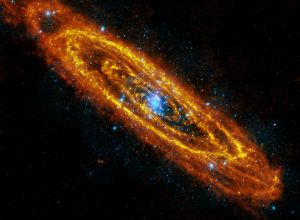The chemical element promethium is classed as a lanthanide and rare earth metal. It was discovered in 1945 by Jacob. A. Marinsky, Lawrence E. Glendenin and Charles D. Coryell.

Data Zone
| Classification: | Promethium is a lanthanide and rare earth metal |
| Color: | silvery-white |
| Atomic weight: | (145), no stable isotopes |
| State: | solid |
| Melting point: | 1142oC, 1415 K |
| Boiling point: | 3300oC, 3573 K |
| Electrons: | 61 |
| Protons: | 61 |
| Neutrons in most abundant isotope: | 84 |
| Electron shells: | 2,8,18,23,8,2 |
| Electron configuration: | [Xe] 4f5 6s2 |
| Density @ 20oC: | 7.220 g/cm3 |
Reactions, Compounds, Radii, Conductivities
| Atomic volume: | 22.39 cm3/mol |
| Structure: | cp: close packed (ABCB) |
| Hardness: | – |
| Specific heat capacity | 0.18 J g-1 K-1 |
| Heat of fusion | 7.13 kJ mol-1 |
| Heat of atomization | 356 kJ mol-1 |
| Heat of vaporization | 332.63 kJ mol-1 |
| 1st ionization energy | 535.9 kJ mol-1 |
| 2nd ionization energy | 1052 kJ mol-1 |
| 3rd ionization energy | 2150 kJ mol-1 |
| Electron affinity | – |
| Minimum oxidation number | 0 |
| Min. common oxidation no. | 0 |
| Maximum oxidation number | 3 |
| Max. common oxidation no. | 3 |
| Electronegativity (Pauling Scale) | – |
| Polarizability volume | 30.1 Å3 |
| Reaction with air | vigorous, => Pm2O3 |
| Reaction with 15 M HNO3 | mild, => Pm(NO3)3 |
| Reaction with 6 M HCl | vigorous,⇒ none |
| Reaction with 6 M NaOH | none |
| Oxide(s) | Pm2O3 |
| Hydride(s) | – |
| Chloride(s) | PmCl3 |
| Atomic radius | 185 pm |
| Ionic radius (1+ ion) | – |
| Ionic radius (2+ ion) | – |
| Ionic radius (3+ ion) | 113 pm |
| Ionic radius (1- ion) | – |
| Ionic radius (2- ion) | – |
| Ionic radius (3- ion) | – |
| Thermal conductivity | 17.9 W m-1 K-1 |
| Electrical conductivity | 2 x 106 S m-1 |
| Freezing/Melting point:: | 1142oC, 1415 K |
Discovery of Promethium
Promethium was the last of the rare earth lanthanide elements to be discovered.
The existence of an element between neodymium (No. 60) and samarium (No. 62) was first predicted by Czech chemist Bohuslav Brauner in 1902.
In 1926, American chemist B. Smith Hopkins at the University of Illinois, claimed that the element had been found in rare-earth residues of monazite and he named it illinium, after his university and State. Hopkins was of the opinion that the element was radioactive with a short half-life.
However, Italian chemist Luigi Rolla at the Royal University in Florence, also claimed to have discovered the element in 1924 (his work was not published until 1926) and he named it florentium(1).
Finally in 1945, firm evidence that element 61 had been isolated was produced by Jacob. A. Marinsky, Lawrence E. Glendenin and Charles D. Coryell at Oak Ridge, Tennessee, who produced it from fission products of uranium. Promethium-147 was isolated by ion-exchange chromatography(2)(3)(4).
They named the element promethium, which was accepted in 1949 by the International Union of Pure and Applied Chemistry.
The name comes from the Greek Titan Prometheus, who in Greek mythology stole fire from Mount Olympus to give to mankind.


Promethium has been identified in the spectrum of star HR 465 in the Andromeda galaxy.(Photo:NASA)
Appearance and Characteristics
Harmful effects:
Promethium is harmful due to its radioactivity.
Characteristics:
Promethium is the only rare earth radioactive metal.
In the dark, its salts luminesce with a pale blue or green glow due to its high radioactivity.
Isotope 147Pm, the most useful isotope, decays with energetic gamma rays.
Uses of Promethium
Promethium is useful as a beta source for thickness gauges.
Promethium is also used in atomic batteries for spacecraft and guided missiles.
Abundance and Isotopes
Abundance earth’s crust: nil
Abundance solar system: negligible
Cost, pure: $ per g
Cost, bulk: $ per 100g
Source: Promethium has not been found in any observable amounts in the earth’s crust. It is found in miniscule amounts in uranium ores as a product of uranium decay. Promethium can be produced as a product of uranium fission.
Isotopes: Promethium has 29 whose half-lives are known, with mass numbers from 130 to 158. Promethium has no naturally occurring isotopes. Its longest lived isotopes are 145Pm with a half-life of 17.7 years and 147Pm, with a half-life of 2.6234 years.

References
- R. F. Trimble., What Happened to Alabamine, Virginium and Illinium?, Journal of Chemical Education. 52.9 (1975): p585.
- Mary Elvira Weeks., The Discovery of the Elements XX., Journal of Chemical Education. March 1933: p167.
- Robert E. Krebs., The history and use of our earth’s chemical elements: a reference guide.,Greenwood Publishing Group, 2006, page 286
- John Emsley., Nature’s building blocks: an A-Z guide to the elements.,Oxford University Press, 2003, page 344
Cite this Page
For online linking, please copy and paste one of the following:
<a href="https://www.chemicool.com/elements/promethium.html">Promethium</a>
or
<a href="https://www.chemicool.com/elements/promethium.html">Promethium Element Facts</a>
To cite this page in an academic document, please use the following MLA compliant citation:
"Promethium." Chemicool Periodic Table. Chemicool.com. 18 Oct. 2012. Web. <https://www.chemicool.com/elements/promethium.html>.
This website has helped me for my project in science on the elements bismuth and promethium. thankyou for making this website